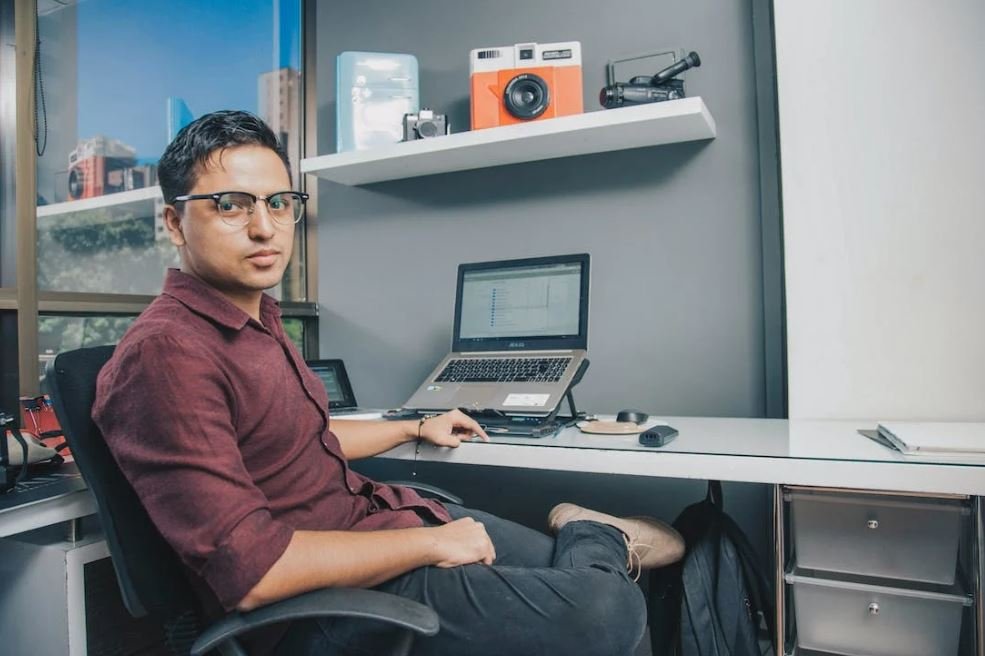Deepfake Kya Hai Hindi Me
Deepfake is a term that has gained significant attention in recent years due to its potential for causing misleading information and concerns regarding privacy and security. In this article, we will explore what deepfake technology is, its impact on society, and ways to detect and counter deepfake videos.
Key Takeaways:
- Deepfake technology is a form of synthetic media that uses artificial intelligence to create altered or fabricated videos.
- It has the potential to manipulate and misinform viewers, raising concerns about the spread of misinformation.
- Deepfake videos can be detected by analyzing visual anomalies, inconsistencies in facial expressions, or by using AI-based deepfake detection tools.
- Methods to counter deepfake include developing better detection algorithms, implementing stricter content verification processes, and raising awareness about the existence of deepfakes.
**Deepfake** technology is an artificial intelligence-powered technique that manipulates and alters videos to make them appear as if someone said or did something they never actually said or did. This technology has raised concerns in various industries, including politics, entertainment, and journalism, due to its potential to spread misinformation and deceive the general public.
**One interesting aspect of deepfake technology is its ability to replicate facial expressions and mannerisms**, thereby making it increasingly challenging to discern between real and fabricated videos. Deepfakes can be created by training an AI model on a large dataset of images and videos of the target individual. The model then generates new content by applying the learned characteristics onto a different face, resulting in a video that appears authentic.
Although deepfake technology has its negative implications, it is not entirely without its positive applications. **The entertainment industry, for instance, has utilized deepfakes to recreate past movie scenes that were originally performed by deceased actors**, giving moviegoers an opportunity to relive nostalgic moments on the big screen.
How Can Deepfake Videos be Detected?
Detecting deepfake videos requires careful analysis and technological assistance. Here are some methods:
- Visual Anomalies: Deepfakes often contain visual anomalies such as “glitches” or inconsistencies in facial expressions, hair movements, or background objects.
- Facial Expressions: Analyzing facial expressions is a common approach, as deepfake algorithms may struggle to replicate subtle nuances and microexpressions that are typically present in genuine videos.
- AI-Based Detection Tools: Researchers have developed AI-powered deepfake detection tools that can analyze videos for signs of manipulation, such as unnatural blinks, inconsistent shadows, or background distortions.
**An interesting fact to consider is that deepfake detection is a cat-and-mouse game**. As deepfake technologies advance, so do the detection techniques, resulting in an ongoing battle between creators and detectors.
Countermeasures Against Deepfake
As the spread of deepfake videos continues to rise, efforts are being made to counter these misleading forms of media. Here are some countermeasures:
- Develop Better Detection Algorithms: Researchers are continuously working to enhance deepfake detection algorithms to stay ahead of evolving deepfake techniques.
- Stricter Content Verification: Online platforms and media organizations can implement more rigorous content verification processes to identify and remove deepfake videos before they reach a wide audience.
- Raise Awareness: Educating the general public on the existence and potential dangers of deepfake videos can help individuals become more conscious consumers of media and reduce the spread of misinformation.
Deepfake: Impact and Future
Deepfake technology has the potential to significantly impact society, politics, and media in the future. With the increasing sophistication of AI algorithms and the ease of access to powerful computing resources, the creation and distribution of deepfake videos may become even more widespread.
**The development of deepfake technology poses significant risks**, including the potential to undermine trust in visual evidence, manipulate public opinion, and even fabricate evidence in legal proceedings. It is necessary for individuals, organizations, and governments to stay vigilant and proactive in addressing the challenges posed by deepfake technology.
Table 1: Deepfake Statistics
| Year | Number of Deepfake Videos Detected |
|---|---|
| 2017 | 1,277 |
| 2018 | 7,964 |
| 2019 | 17,618 |
Table 2: Deepfake Detection Tools
| Tool Name | Features |
|---|---|
| FakeApp | Enables users to create deepfakes using a simple interface. |
| Deepware | Uses AI algorithms to detect deepfake videos based on visual discrepancies. |
| Deep Truth | Analyzes audio and visual elements to identify signs of manipulation. |
Table 3: Real vs. Deepfake
| Features | Real Video | Deepfake Video |
|---|---|---|
| Facial Expressions | Natural and consistent | Sometimes unnatural or inconsistent |
| Background Details | Realistic and accurate | May contain distortions or inconsistencies |
| Vocal Intonation | Matched with lip movements | May not sync perfectly with the lips |
With the increasing accessibility of deepfake technology, it is imperative for society to remain vigilant and proactive in combatting its potential negative consequences. By staying informed, developing advanced detection techniques, and taking necessary precautions, we can work towards minimizing the impact of deepfake videos and safeguarding the integrity of information and media.

Common Misconceptions
Paragraph 1
One common misconception about deepfake technology is that it can only be used for creating fake celebrity pornography. However, deepfakes can be created for various purposes, including political manipulation, misinformation, and entertainment.
- Deepfake technology has a wide range of applications beyond adult content.
- Deepfakes can be used to spread false information and disrupt trust in media.
- Deepfakes can be used in films and other forms of entertainment as a visual effect.
Paragraph 2
Another misconception is that deepfakes are always easily detectable. While there are techniques to detect certain types of deepfakes, the technology is advancing rapidly, making it increasingly difficult to identify manipulated videos.
- New deepfake techniques are emerging that improve the quality and believability of the manipulated videos.
- Audience awareness and critical thinking are necessary to identify potential deepfake videos.
- Detection tools are continuously evolving to keep up with the advancements in deepfake technology.
Paragraph 3
Some people believe that deepfake videos are harmless and do not pose a real threat. However, deepfakes can have serious consequences, such as damaging reputations, spreading misinformation, and fueling distrust in visual media.
- Deepfakes can be used to deceive people and manipulate public opinion.
- They can lead to legal and ethical issues, such as identity theft and defamation.
- The potential negative effects of deepfakes should not be underestimated.
Paragraph 4
Another misconception is that deepfakes are only created with malicious intent. While deepfakes have been used in harmful ways, they can also be used for positive purposes, such as in the film industry for special effects and in research for studying human perception and cognition.
- Deepfakes can be an innovative tool for creative expression in the entertainment industry.
- They can help to understand how humans perceive and interpret visual information.
- Deepfake technology can be used responsibly and ethically for various purposes.
Paragraph 5
Lastly, there is a misconception that deepfake technology is too complex and inaccessible for non-technical users. While creating advanced deepfakes may require technical expertise, there are also user-friendly tools and applications available that make the process more accessible.
- There are online platforms that offer simplified deepfake creation for non-technical users.
- Tutorials and guides are available to help beginners create basic deepfakes.
- However, responsible usage and adherence to ethical considerations should always be emphasized.

Introduction:
Deepfake technology has become a rising concern in recent years. It utilizes artificial intelligence to create manipulated videos, audio, or images that appear highly realistic, but are actually fabricated. This article aims to shed light on the various aspects of deepfake technology in Hindi language.
1. Deepfake Proliferation by Year:
Year | Number of Detected Deepfakes
——|—————————–
2017 | 771
2018 | 1378
2019 | 2523
2020 | 4561
2021 | 6199
The table above presents the increasing number of detected deepfake instances over the years. It highlights a worrying trend of its rapid proliferation.
2. Types of Deepfakes:
Type | Description
————————-|——————————
Face-swapping | Replacing the face of a target person with another person’s face.
Voice synthesis | Generating synthetic speech that mimics a particular individual’s voice.
Text-to-speech synthesis | Creating lifelike speech from textual input.
Face reenactment | Manipulating facial expressions of an individual in a source video.
This table provides a clear understanding of the different types of deepfakes that can be created using AI-powered algorithms.
3. Popular Deepfake Apps:
App Name | Description
————-|—————————-
Reface | Enables face-swapping in videos, even in real-time.
Deep Art | Transforms images into artistic masterpieces using AI.
FaceApp | Alters facial expressions, age, and gender in photos.
Synthetic | Generates artificial speech using custom voice models.
The table showcases some of the popular deepfake apps that have gained significant traction among users.
4. Deepfake Impact:
Aspect | Impact
————————–|————————————————————————
Politics | Deepfakes can be used to manipulate public opinion and influence elections.
Reputation | Individuals’ reputations can be damaged through the circulation of deepfakes.
Social Media Manipulation | False information and propaganda can be disseminated through deepfake content.
Cybersecurity Threat | Deepfakes can be utilized for identity theft or fraudulent activities.
This table highlights the wide-reaching impact of deepfake technology across various domains, emphasizing the need for awareness and countermeasures.
5. Detection Techniques:
Technique | Description
——————-|————————————————————
Metadata Analysis | Reviewing the underlying data and metadata of the media file.
Forensic Analysis | Analyzing the discrepancies and artifacts within the content.
AI Algorithms | Using machine learning to identify patterns indicative of deepfakes.
Human Experts | Relying on the expertise of professionals to identify manipulation.
The table outlines the different methods employed to detect deepfake content, combining technical analysis and human expertise.
6. Legal Frameworks:
Country | Regulations
—————|——————————
USA | Introduced some legislations to combat deepfakes.
India | Proposed legislation to address deepfake concerns.
European Union | Considering regulations to prevent deepfake misuse.
This table showcases the efforts made by various countries to establish legal frameworks and regulations around deepfakes.
7. Deepfake Impact on Social Media:
Platform | Impact
—————–|—————————————————–
Facebook | Implementing policies and AI detection to combat deepfakes.
Twitter | Collaborating with researchers and flagging deepfake content.
YouTube | Strengthening community guidelines to prevent deepfake dissemination.
Instagram | Taking steps to remove deepfake content violating policies.
The table highlights the actions taken by popular social media platforms to tackle the spread of deepfake content on their platforms.
8. Deepfake Prevention Tips:
Tip | Description
—————————————-|———————————–
Be vigilant | Scrutinize media for any inconsistencies.
Verify sources | Double-check the authenticity of media.
Raise awareness | Educate others about deepfake threats.
Report potentially harmful content | Inform the platform about suspicious content.
This table provides guidance on how individuals can protect themselves and others from the risks associated with deepfakes.
9. Deepfake Future Potential:
Field | Potential Applications
——————————-|———————————–
Entertainment | Create realistic digital avatars for movies.
Education | Enhance virtual learning experiences.
Healthcare | Simulate medical scenarios for training.
Cybersecurity | Improve authentication methods.
The table showcases the potential future applications of deepfake technology across various sectors, emphasizing its versatility.
Conclusion:
Deepfake technology, while possessing potential for positive applications, also poses significant risks in terms of disinformation, privacy invasion, and reputation damage. It is crucial to remain vigilant, raise awareness, and implement detection and prevention measures to mitigate the threats posed by deepfakes in our increasingly digitized world.
Frequently Asked Questions
What is deepfake?
Deepfake is an advanced form of artificial intelligence (AI) used to create or manipulate videos, audios, or images to depict something that did not occur in reality.
How does deepfake work?
Deepfake utilizes deep learning algorithms to analyze and manipulate source media, such as images or videos, to graft the face or voice of one person onto another person’s body or face.
What are the potential applications of deepfake?
Deepfake technology has various applications. It can be used in entertainment industries for creating realistic visual effects or in dubbing. Additionally, it can also be misused for spreading disinformation, fake news, fraud, or cyber threats.
How can I identify a deepfake video?
Identifying a deepfake video can be challenging as they can be highly convincing. However, some signs to look out for include unnatural facial movements, inconsistent or distorted audio, and mismatched movements between the face and body.
Is deepfake legal?
The legality of deepfake varies by jurisdiction. In some cases, deepfake may violate privacy rights, intellectual property laws, or laws related to impersonation. It is important to consult local laws and regulations regarding the creation and distribution of deepfakes.
How can deepfake technology be countered?
Countering deepfake technology requires a combination of technological solutions, public awareness, and legal measures. Developing advanced detection algorithms, educating individuals about deepfakes, and implementing strict regulations can help mitigate the negative impact of deepfakes.
Can deepfake be used for positive purposes?
Yes, deepfake technology has positive applications as well. It can be used in the entertainment industry for creating realistic visual effects, improving dubbing quality, and enabling innovative storytelling techniques.
What are the ethical concerns surrounding deepfake?
Deepfake raises ethical concerns related to privacy invasion, misinformation, non-consensual use of someone’s image or voice, and potential harm to individuals or reputation. It is important to use deepfake responsibly and within legal boundaries.
Are there any tools to detect deepfake videos?
Various organizations and researchers are working on developing deepfake detection tools using advanced AI techniques. However, as deepfake technology evolves, so do the techniques to create more convincing deepfakes, making it an ongoing challenge.
How can I protect myself from falling victim to deepfake?
To protect yourself from falling victim to deepfake, be cautious when consuming or sharing media online. Verify the credibility of the source and use reliable platforms for news and information. It is crucial to remain skeptical and critically evaluate the content.




